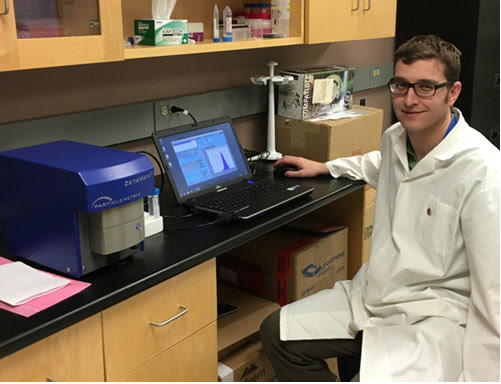Members Login

Channels
Special Offers & Promotions
The Ottawa Hospital Research Institute Uses the ZetaView from Particle Metrix to Study Membrane Microparticles as Potential Biomarkers for Underlying Diseases
Particle Metrix, developers of versatile particle characterization solutions for the life sciences, report on the work of the Burger Laboratory at Ottawa Hospital Research Institute.
 The Lab is studying the role of microparticles in the pathogenesis of diabetic vascular and kidney disease.
The Lab is studying the role of microparticles in the pathogenesis of diabetic vascular and kidney disease.
Dr Dylan Burger leads a research group at Ottawa Hospital’s Research Institute. Their research focuses on understanding the biological role of membrane vesicles (specifically exosomes and microparticles/microvesicles) in vascular and renal disease. In particular, they are interested in the impact of disease on the rate of formation and molecular makeup of these vesicles.
They chose the ZetaView system from Particle Metrix for microparticle characterization because it allows them to obtain both quantitative information on the number of particles in a particular preparation as well as basic physical information (i.e. size and zeta potential). This has utility for in assessment of vesicles as biomarkers but also in quality control in vesicle preparations. When coupled with fluorescence detection, it also allows for immunophenotyping of vesicles to determine cell origin or vesicle content.
Talking about his experiences in particle characterization prior to the use of Zetaview, Dr Burger said “We have previously used electron microscopy, dynamic light scattering, flow cytometry, tunable resistive pulse sensing along with other nanoparticle tracking analysis systems. Now, with ZetaView, we have a system which delivers high detection sensitivity over a range of samples. These may be detected at low concentration levels and we have the ability to visualize fluorescent particles as well as to measure zeta potential in real time. The automation of the system (auto-alignment and autofocusing) expedites analysis and also allows for better across-lab standardization. Low maintenance needs allow us to use this system on a daily basis. Last but not least, we like that the system has a very small footprint so can be placed anywhere in a standard biomedical laboratory.”
Media Partners


